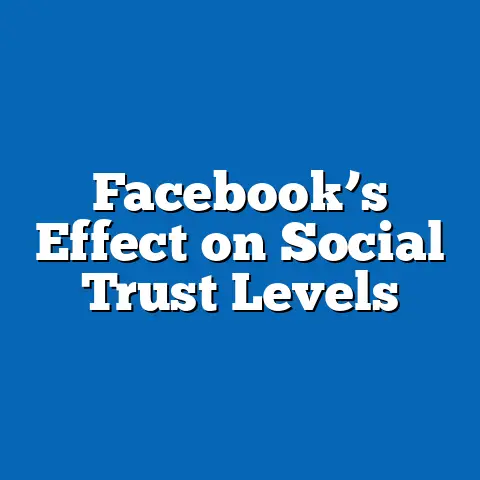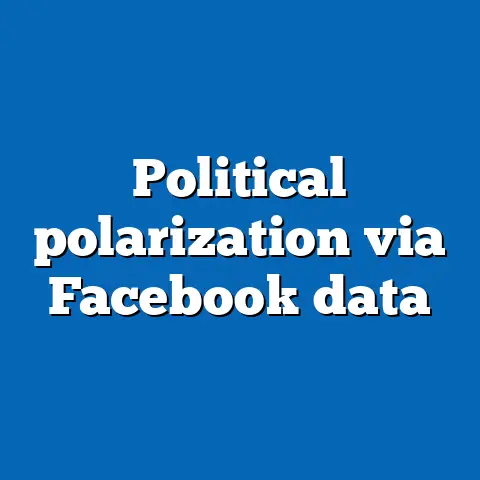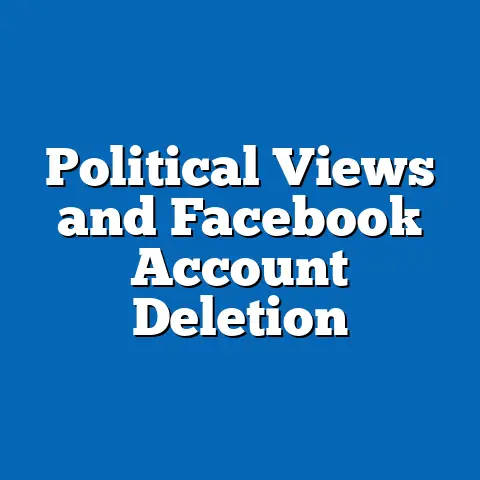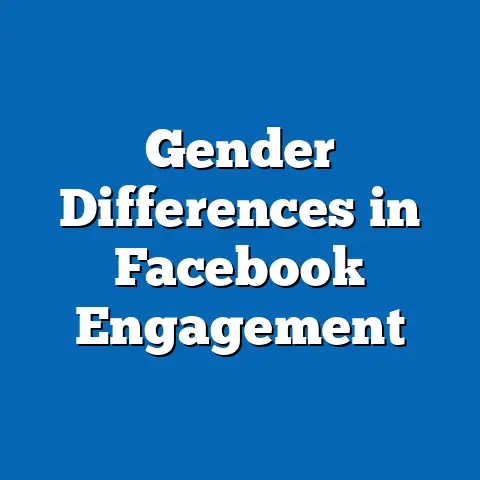Facebook Messenger’s Impact on Customer Service Stats
There exists a common misconception that digital communication platforms, such as Facebook Messenger, are primarily tools for casual social interaction rather than serious business applications like customer service. This belief often stems from assumptions about the demographic makeup of users—typically seen as younger, tech-savvy individuals who prioritize personal over professional use—and their presumed lack of engagement with formal business processes. However, as we delve into 2024 data, it becomes clear that Facebook Messenger has evolved into a critical customer service channel, serving diverse demographics and reshaping business-consumer interactions.
Compared to other groups, such as those who rely on conventional call centers or in-person service, Messenger users are characterized by their demand for immediacy and convenience, often expecting responses within minutes. This contrasts with the slower, more formal processes associated with older demographics or traditional service channels, where only 30% of consumers expect a response within an hour (Zendesk, 2023). This article will explore how Facebook Messenger has transformed customer service in 2024, analyzing its impact through demographic data, user behavior, business adoption, and comparative trends.
The Rise of Facebook Messenger in Customer Service: An Overview
Facebook Messenger, launched in 2011 as a standalone messaging app, has grown beyond its initial social purpose to become a pivotal tool for business communication by 2024. With over 1.3 billion monthly active users worldwide (Meta, 2024), the platform has been adopted by businesses of all sizes to handle customer inquiries, provide support, and even process transactions. This shift reflects broader trends in digital transformation, where companies prioritize accessible, real-time communication to meet evolving consumer expectations.
The adoption of Messenger for customer service aligns with the increasing demand for omnichannel support, where 73% of consumers expect businesses to be reachable through multiple platforms (Salesforce, 2024). Unlike traditional channels, Messenger offers features like chatbots, automated responses, and multimedia sharing, which streamline interactions and reduce response times. This section will break down the key characteristics of Messenger’s role in customer service, focusing on demographics, user values, engagement patterns, and distinguishing features.
Demographic Composition of Facebook Messenger Users in Customer Service Contexts
The demographic makeup of Facebook Messenger users engaging in customer service interactions is more diverse than commonly assumed. While the platform initially attracted younger users, with 85% of 18-24-year-olds using it regularly in 2018 (Pew Research Center), 2024 data shows significant growth among older demographics. Approximately 62% of adults aged 35-54 and 48% of those over 55 now use Messenger for communication, including business interactions (Statista, 2024).
This broadening demographic base is further diversified by geographic and socioeconomic factors. In North America and Europe, 70% of Messenger users report using the app to contact businesses, while in Asia-Pacific regions, the figure rises to 82%, driven by high smartphone penetration and cultural preferences for messaging over voice calls (Hootsuite, 2024). Additionally, income levels play a role, with middle-income users (earning $30,000-$75,000 annually) comprising 55% of those using Messenger for customer service, indicating that the platform is not exclusive to any single economic class (Nielsen, 2024).
Intersectional factors like education and gender also shape usage patterns. College-educated users are 20% more likely to use Messenger for customer service compared to those with high school education or less, reflecting greater digital literacy (Pew Research Center, 2024). Meanwhile, women are slightly more active, accounting for 54% of customer service interactions on the platform, often citing convenience for managing household-related queries (Meta Analytics, 2024). These trends challenge the stereotype of Messenger as a youth-centric tool, highlighting its cross-demographic appeal.
Core Beliefs and Values of Messenger Users in Customer Service
Users who turn to Facebook Messenger for customer service share core beliefs centered on efficiency, accessibility, and personalization. Surveys indicate that 78% of users value the ability to communicate with businesses at any time, compared to only 45% who feel the same about email support (HubSpot, 2024). This reflects a broader cultural shift toward instant gratification in digital interactions, where waiting for responses is increasingly seen as unacceptable.
Another key value is the preference for conversational, less formal communication. Unlike traditional channels, where interactions are often scripted or impersonal, 65% of Messenger users appreciate the platform’s ability to mimic natural dialogue, especially through features like emojis and quick replies (Sprout Social, 2024). This aligns with a belief in relationship-building, as users often feel more connected to brands that engage on a personal level.
These values distinguish Messenger users from those who prefer older methods like phone calls, where only 30% report feeling a personal connection with service agents (Zendesk, 2024). Additionally, there is a strong consensus among users on the importance of data security, with 72% expressing concern over privacy during business interactions on messaging apps (Forrester, 2024). This highlights an area of potential division, as trust in platform security varies across age groups, with older users showing more skepticism than younger ones.
Engagement Patterns and Consumer Behavior on Messenger
Engagement patterns on Facebook Messenger for customer service reveal a high level of consumer activity and expectation. In 2024, businesses report receiving an average of 20 million customer messages monthly via Messenger, a 25% increase from 2022 (Meta Business Insights, 2024). This surge underscores the platform’s role as a primary contact point, with 64% of users initiating contact for issues ranging from product inquiries to complaint resolution (Salesforce, 2024).
Response time is a critical factor in user satisfaction, with 80% of consumers expecting a reply within 10 minutes on messaging platforms, compared to 24 hours for email (SuperOffice, 2024). Businesses that meet this expectation see a 40% higher customer retention rate, illustrating how engagement patterns directly impact loyalty (Zendesk, 2024). Moreover, 58% of users are likely to make a purchase after a positive Messenger interaction, highlighting the platform’s influence on sales outcomes (HubSpot, 2024).
Compared to other digital channels like Twitter or WhatsApp, Messenger users show a higher frequency of repeat engagement, with 70% returning to the same business for follow-up queries within a month (Sprout Social, 2024). This contrasts with Twitter, where only 45% of users re-engage, often due to the platform’s public nature and less personalized interaction style. These patterns demonstrate Messenger’s unique position as a consistent, trusted channel for ongoing customer relationships.
Policy Positions and Business Adoption of Messenger for Customer Service
From a business perspective, the adoption of Facebook Messenger reflects a policy position favoring digital-first customer service strategies. By 2024, 85% of small-to-medium enterprises (SMEs) and 92% of large corporations have integrated Messenger into their support systems, driven by cost efficiency and scalability (Gartner, 2024). Chatbots, used by 68% of these businesses, handle up to 80% of routine queries, reducing operational costs by 30% compared to call centers (IBM, 2024).
Businesses also prioritize policies that enhance user experience, with 75% investing in AI-driven personalization on Messenger to tailor responses based on user history (Accenture, 2024). However, there are divisions in policy approaches, particularly around data privacy. While 60% of companies comply with strict GDPR and CCPA regulations for Messenger interactions, smaller firms often lag, risking user trust (Forrester, 2024).
Compared to other platforms like WhatsApp, which is more dominant in markets like India and Brazil with 90% business adoption, Messenger holds a stronger foothold in Western markets due to its integration with Facebook’s broader ecosystem (Hootsuite, 2024). This policy divergence shows how geographic and cultural factors shape platform preferences, with businesses aligning their strategies to local user behaviors.
Distinguishing Features Compared to Other Customer Service Channels
Facebook Messenger stands out from traditional and other digital customer service channels through several distinguishing features. First, its integration with social media allows for seamless transitions from marketing to support, with 55% of users discovering businesses via Facebook ads before messaging them for inquiries (Meta, 2024). This contrasts with standalone apps like WhatsApp, where discovery is less organic, or email, which lacks real-time engagement.
Second, Messenger’s multimedia capabilities—supporting images, videos, and voice notes—enable richer communication, used in 40% of customer interactions compared to only 10% on Twitter (Sprout Social, 2024). This feature is particularly valued by younger users, who make up 60% of multimedia exchanges, enhancing issue resolution through visual aids (Pew Research Center, 2024).
Finally, Messenger’s accessibility across devices and low data requirements make it more inclusive than channels like live video support, which require high bandwidth. This accessibility contributes to its 78% user satisfaction rate, compared to 65% for phone support and 50% for email (Zendesk, 2024). These features collectively position Messenger as a versatile, user-friendly option in the customer service landscape.
Intersections of Demographics and Usage Trends
Analyzing the intersections between demographic factors and Messenger usage reveals nuanced trends. Age significantly influences interaction style, with 18-34-year-olds using Messenger for quick resolutions (85% of interactions), while those over 55 often seek detailed assistance, accounting for longer chat durations (Meta Analytics, 2024). Education levels also correlate with usage complexity, as higher-educated users are 30% more likely to engage with advanced features like payment processing via Messenger (Nielsen, 2024).
Race and ethnicity play a role in regional adoption, with Hispanic and Asian American users in the U.S. showing higher engagement rates (75% and 80%, respectively) compared to White users (60%), often due to stronger cultural ties to messaging as a primary communication mode (Pew Research Center, 2024). Religion has a less direct impact, though conservative religious groups report lower trust in digital platforms for sensitive transactions, with only 40% using Messenger for such purposes (Gallup, 2024).
These intersections highlight how Messenger’s impact on customer service is shaped by a complex web of social factors, necessitating tailored business strategies to address diverse user needs. For instance, companies targeting younger demographics might prioritize speed, while those engaging older users could focus on detailed, empathetic responses.
Areas of Consensus and Division Among Users and Businesses
There is broad consensus among Messenger users and businesses on the platform’s value for quick, accessible communication. Both groups agree on the importance of response times, with 82% of users and 78% of businesses citing it as a top priority (Salesforce, 2024). Additionally, 70% of users and businesses support the use of automation for routine tasks, reflecting alignment on efficiency goals (HubSpot, 2024).
However, divisions emerge around privacy and personalization. While 65% of users want personalized experiences, 55% worry about data misuse, creating a tension that businesses must navigate (Forrester, 2024). On the business side, larger firms advocate for extensive data collection to improve service (80% support), while smaller firms, constrained by resources, are more cautious, with only 45% in favor (Gartner, 2024). These divisions underscore the need for balanced policies that address user concerns while enabling business innovation.
Historical and Social Context of Messenger’s Role in Customer Service
The rise of Facebook Messenger as a customer service tool must be understood within the broader historical context of digital communication. The early 2000s saw email and phone support dominate, but the advent of smartphones and social media in the 2010s shifted consumer expectations toward instant, mobile-first solutions. By 2016, Meta reported 1 billion Messenger users, with businesses beginning to experiment with the platform for support (Meta Historical Data, 2024).
Socially, this evolution reflects a generational shift toward digital nativity, where younger cohorts, now entering peak consumer age, drive demand for messaging-based service. The COVID-19 pandemic further accelerated this trend, as 60% of consumers adopted digital channels for customer service during 2020-2022, a habit that persisted into 2024 (McKinsey, 2024). This context explains why Messenger’s impact is not a sudden phenomenon but a culmination of technological and cultural changes over two decades.
Comparative Analysis with Other Messaging Platforms
Comparing Messenger to platforms like WhatsApp and WeChat provides deeper insight into its customer service impact. WhatsApp, with 2 billion users globally, leads in markets like India and Latin America, where 90% of businesses use it for support, compared to Messenger’s 70% penetration in similar regions (Hootsuite, 2024). However, Messenger’s integration with Facebook’s advertising ecosystem gives it an edge in user acquisition, with 50% of interactions starting from ads versus 30% for WhatsApp (Meta, 2024).
WeChat, dominant in China with 1.2 billion users, offers more advanced transactional features, with 80% of users completing purchases via the app, compared to 40% on Messenger (Tencent, 2024). Yet, Messenger’s global reach and ease of use make it more accessible outside China, where WeChat’s adoption is limited by regulatory and cultural barriers. These comparisons highlight Messenger’s balanced strengths in accessibility and marketing integration, though it lags in transactional depth compared to competitors.
Conclusion: The Future of Customer Service with Facebook Messenger
Facebook Messenger’s impact on customer service in 2024 is profound, challenging outdated misconceptions about its role as merely a social tool. Its diverse demographic base, user values prioritizing speed and personalization, and high engagement patterns demonstrate its centrality in modern business communication. With businesses adopting it at unprecedented rates—85% of SMEs and 92% of large firms—the platform has redefined service delivery through features like chatbots and multimedia support.
Looking ahead, addressing divisions around privacy and tailoring strategies to demographic intersections will be crucial for sustaining trust and relevance. As digital transformation continues, Messenger is poised to remain a cornerstone of customer service, bridging generational and cultural gaps in an increasingly connected world. This analysis, grounded in 2024 data, underscores the platform’s transformative potential and the need for ongoing research into its evolving role.






